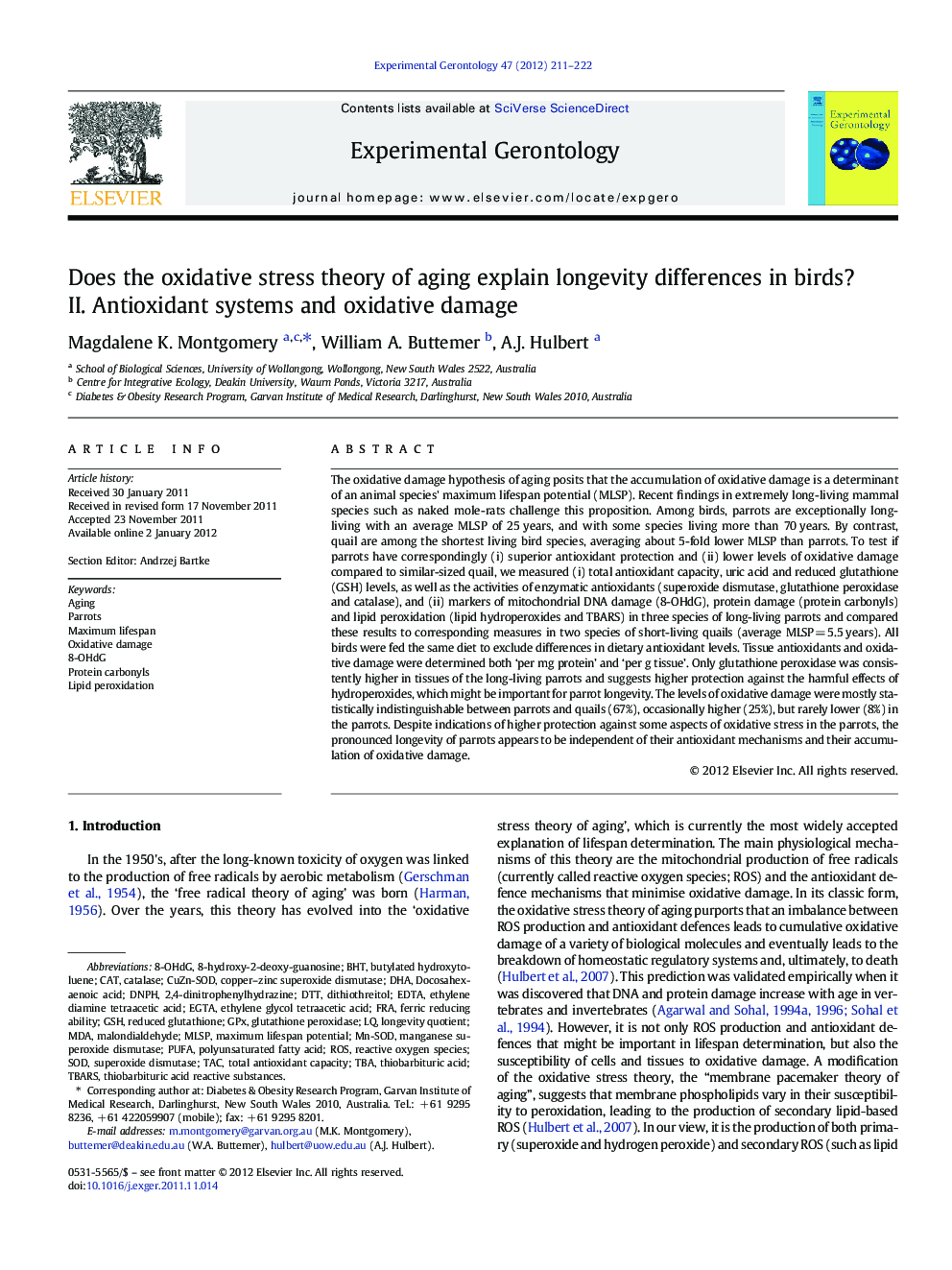| کد مقاله | کد نشریه | سال انتشار | مقاله انگلیسی | نسخه تمام متن |
|---|---|---|---|---|
| 1906753 | 1046314 | 2012 | 12 صفحه PDF | دانلود رایگان |

The oxidative damage hypothesis of aging posits that the accumulation of oxidative damage is a determinant of an animal species' maximum lifespan potential (MLSP). Recent findings in extremely long-living mammal species such as naked mole-rats challenge this proposition. Among birds, parrots are exceptionally long-living with an average MLSP of 25 years, and with some species living more than 70 years. By contrast, quail are among the shortest living bird species, averaging about 5-fold lower MLSP than parrots. To test if parrots have correspondingly (i) superior antioxidant protection and (ii) lower levels of oxidative damage compared to similar-sized quail, we measured (i) total antioxidant capacity, uric acid and reduced glutathione (GSH) levels, as well as the activities of enzymatic antioxidants (superoxide dismutase, glutathione peroxidase and catalase), and (ii) markers of mitochondrial DNA damage (8-OHdG), protein damage (protein carbonyls) and lipid peroxidation (lipid hydroperoxides and TBARS) in three species of long-living parrots and compared these results to corresponding measures in two species of short-living quails (average MLSP = 5.5 years). All birds were fed the same diet to exclude differences in dietary antioxidant levels. Tissue antioxidants and oxidative damage were determined both ‘per mg protein’ and ‘per g tissue’. Only glutathione peroxidase was consistently higher in tissues of the long-living parrots and suggests higher protection against the harmful effects of hydroperoxides, which might be important for parrot longevity. The levels of oxidative damage were mostly statistically indistinguishable between parrots and quails (67%), occasionally higher (25%), but rarely lower (8%) in the parrots. Despite indications of higher protection against some aspects of oxidative stress in the parrots, the pronounced longevity of parrots appears to be independent of their antioxidant mechanisms and their accumulation of oxidative damage.
► Parrots as a group live 5–7 times longer than same-sized quails.
► Antioxidant defences and oxidative damage were measured in 1 y old birds of 5 species.
► Most antioxidants showed no consistent association with species longevity.
► Similarly, oxidative damage was mostly indistinguishable between parrots and quails.
► Antioxidant mechanisms and oxidative damage do not account for parrot longevity.
Journal: Experimental Gerontology - Volume 47, Issue 3, March 2012, Pages 211–222